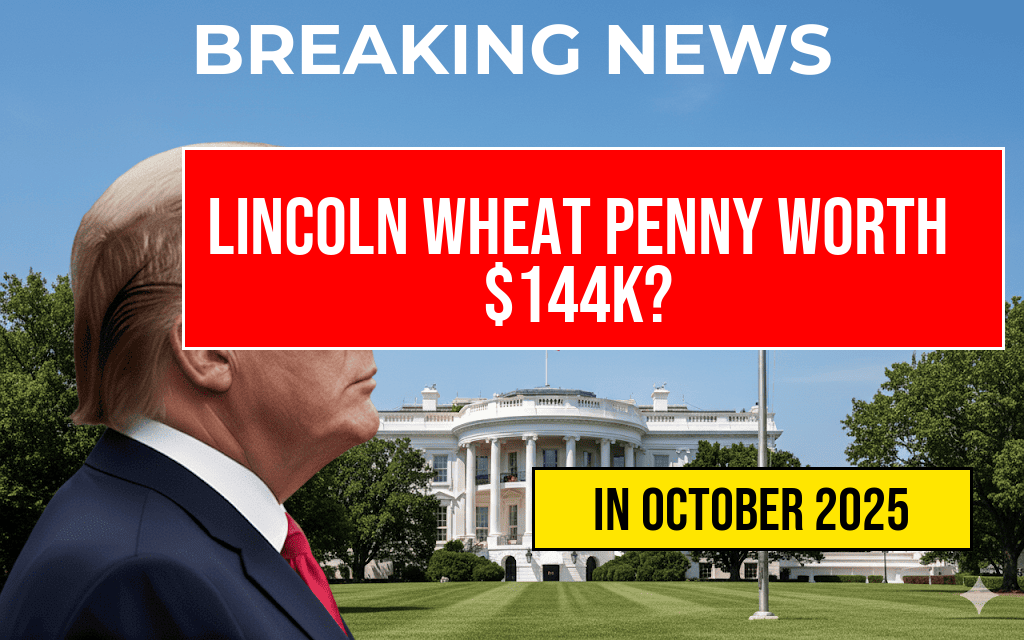The recent news surrounding the Lincoln Wheat Penny, particularly one that sold for an astonishing $144,000 at auction, has sparked curiosity among collectors and casual coin enthusiasts alike. This penny, minted in 1943, is notable not just for its rarity but because it was produced during World War II when copper was scarce, leading to coins being made from zinc-coated steel. The sale of this particular penny has reignited discussions about the potential hidden treasures still circulating in pockets and piggy banks across America. As collectors scour through their spare change, the question remains: is this valuable penny still out there, or has it already been claimed by savvy investors?
Understanding the Value of the Lincoln Wheat Penny
The Lincoln Wheat Penny, first minted in 1909, features the iconic image of President Abraham Lincoln on the obverse and two wheat stalks on the reverse. While the majority of these coins are relatively common and worth only a few cents, certain editions, particularly those minted during specific years or with unique errors, can command significant prices. The 1943 copper penny is one such example, as it was accidentally produced due to a mix-up in the minting process, leading to a handful of these coins being struck in copper rather than steel.
What Makes the 1943 Copper Penny So Special?
The 1943 copper penny stands out for several reasons:
- Rarity: It is estimated that only a few dozen of these pennies were minted in copper, making them extremely rare.
- Historical Significance: The coin provides a glimpse into a unique period in American history, reflecting the resource constraints during World War II.
- Collector Demand: The rarity and historical context have driven up demand among avid coin collectors, resulting in high auction prices.
Market Trends and Recent Sales
The recent sale of the 1943 copper penny for $144,000 has become a benchmark for the value of similar coins. According to auction house reports, prices for rare coins have been on the rise, driven by a growing interest in numismatics. The Lincoln Wheat Penny remains a focal point for many collectors, especially those seeking to invest in tangible assets.
Is the Penny Still in Circulation?
While it is possible that a few of these rare pennies remain in circulation, the likelihood is low. Coin enthusiasts and collectors have become increasingly aware of the 1943 copper penny’s value, leading many to carefully inspect their change for any hidden treasures. However, the vast majority of 1943 pennies found today are made from steel and have minimal value.
How to Identify a 1943 Copper Penny
If you suspect you might have a 1943 copper penny, here are some tips for identification:
- Check the Weight: A genuine copper penny weighs 3.11 grams, while the steel version weighs only 2.7 grams.
- Inspect the Color: Look for a penny that is a reddish-brown color, indicating it is made of copper.
- Use a Magnet: The steel pennies will be attracted to a magnet, while the copper ones will not.
Where to Sell Rare Coins
If you believe you have a valuable penny, it’s essential to understand your options for selling it:
- Coin Dealers: Local coin shops often buy rare coins and can provide appraisals.
- Online Auctions: Websites like eBay and specialized coin auction sites can help you reach a wider audience.
- Numismatic Shows: Attending a numismatic convention can connect you with buyers and collectors interested in rare coins.
Final Thoughts
The excitement surrounding the Lincoln Wheat Penny, particularly the 1943 copper version, highlights the intersection of history, economics, and collectible interests. While the chances of finding a $144,000 penny in everyday circulation are slim, the thrill of the hunt remains a captivating pursuit for many. For more information on coins and their values, resources such as Forbes and Wikipedia provide valuable insights into the numismatic world.
Frequently Asked Questions
Question 1: What makes the Lincoln Wheat Penny so valuable?
The Lincoln Wheat Penny is considered valuable due to its rarity, historical significance, and the specific year and mint mark of the coin. Some editions, particularly those with low mintage or errors, can fetch prices as high as $144,000.
Question 2: Is the $144K Lincoln Wheat Penny still in circulation?
No, the $144K Lincoln Wheat Penny is not in circulation. It is a rare collectible that has likely been removed from general circulation due to its high value.
Question 3: How can I tell if my Lincoln Wheat Penny is valuable?
To determine if your Lincoln Wheat Penny is valuable, check the year, mint mark, and condition. Consulting with a coin expert or using a price guide can provide more information on its potential worth.
Question 4: What should I do if I find a valuable Lincoln Wheat Penny?
If you find a potentially valuable Lincoln Wheat Penny, consider having it appraised by a professional coin dealer. They can provide insights on its value and advise on the best way to sell or preserve it.
Question 5: Are all Lincoln Wheat Pennies worth a lot of money?
No, not all Lincoln Wheat Pennies are worth significant amounts. Most are common and can be found for just a few cents. It’s the rare varieties that can reach high prices, such as the $144K penny.

Leave a Reply